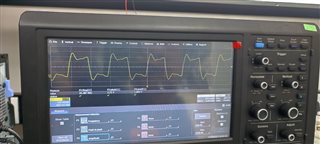Other Parts Discussed in Thread: ADC3542, ADS4146
Hi,
We are using ads4149. The adc input signal frequency range is 328Mhz to 335Mhz. I am planning to use 24mhz as sampling frequency, by considering the input bandwidth of 7Mhz.
For this frequency range, datasheet says 69dB as SNR expected. if I am using 24mhz as fs, will it degrade the SNR because of the undersampling?
If yes, pls let me know what kind of impact will be there on snr and how much it may reduce because of the fold back(Alias)
Thanks
Vetri


